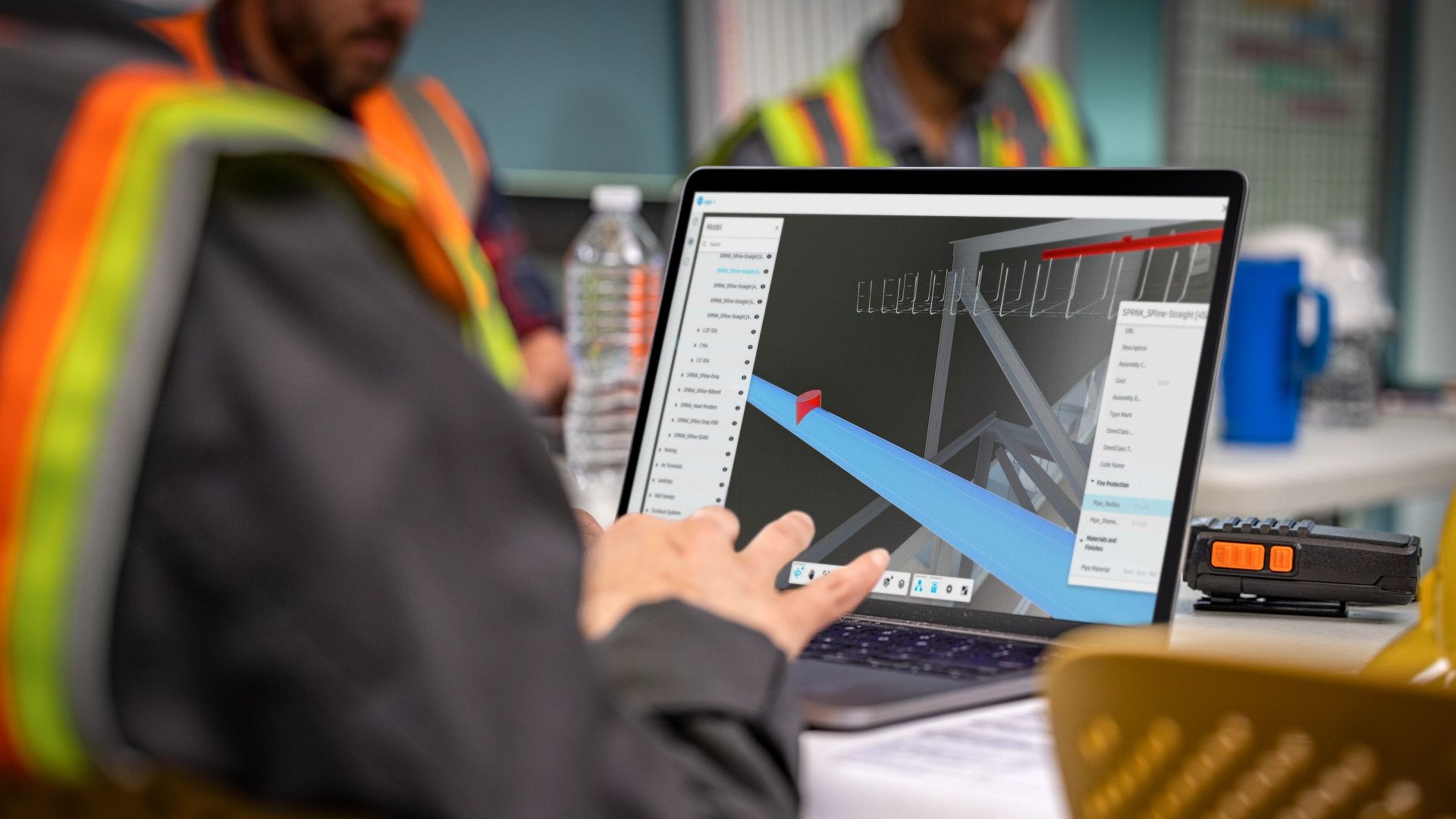
Design and construction teams are fundamental to how every project in the world gets built. But far too often, there are gaps and silos between design and construction teams, which can lead to unpredictability, project delays, and higher costs.
At DPR Construction, innovation and collaboration are at the core of how we build and deliver projects. Particularly, we've found that integrating design and construction teams and workflows at the earliest project phases leads to better outcomes for our teams, business, and clients.
As Atul Khanzode, our CTO, pointed out on a recent podcast, "The biggest cause of the lack of predictability is not having key stakeholders like builders, GCs, and subs involved early in the design process. This adds to a lot of missed opportunities to incorporate their knowledge into the complete design to be buildable."
Everyone can agree that stakeholder involvement and collaboration are crucial. Of course, doing it is easier said than done, given that team members (especially from external organizations) often have different processes, standards, and tools.
At DPR, we've prioritized integrating design and construction workflows, and we’ve seen great project outcomes as a result. With that in mind, DPR Superintendent Adam Valles and I recently joined a webinar with Autodesk where we shared how we've been able to drive more successful projects by implementing “construction-informing design” workflows and improving teamwork.
Check out these five key learnings from the session.
With incorrect, late-issued, and incomplete designs being among the top five causes of capital project claims and disputes, it's clear that early stakeholder involvement can prevent major issues.
When it comes to construction projects, we strive to bring everyone together at every stage. The type of contract we use in our projects is a big factor in making this happen. In some contract scenarios, particularly traditional design-bid-build, there isn't much room for early engagement since the team isn't on the project yet. However, progressive design-build contracts and integrated project delivery (IPD) allow for early involvement or "left of line" engagement.
The good news is owners increasingly recognize these advantages. As Adam points out, "We're seeing more and more clients realizing the benefit of construction-informing design workflows, having the model complete before construction."
It's also worth noting that some of this work takes place during the pre-bid phase. We bring partners on board based on their processes and ability to perform the job efficiently, not just their bid price. In other words, we're selecting teams based on their efficiency and methodology.
Bringing people together is incredibly challenging if team members use different tools and platforms. That's why we implement a centralized document control system that ensures all parties are working with the latest information.
Beyond giving teams a single source of truth, having a central data and document management hub allows us to improve client satisfaction and trust. According to a global study by Deloitte Access Economics, commissioned by Autodesk, 61% of general contractors agree that clients seek greater transparency in key data points and information about a project.
At DPR, we use Autodesk Construction Cloud as our single source of truth for document control, with a big focus on model-based workflows. We like to say that “if it’s not in the model, it doesn’t exist”, and that’s because we want our teams working in 3D and tracking decisions in the model. It's been a huge asset in streamlining communication from architects to management to the field. With Autodesk Construction Cloud, we can publish web-based 3D viewers, so our entire team doesn't need to be in Revit to see the model. We give project managers and project executives access to both the 2D drawings the 3D model directly rather than having them wait until plans are published.
These steps also ensure that all team members speak the same language. This is critical because the sooner we reach that common data language as a team, the more successful we'll be.
We want to eliminate the boom-bust cycle on construction projects. For instance, if an architect and owner designs something too expensive, they must value engineer the costs down and cut the scope. One way to avoid that is to bring builders like us into a virtual environment before it physically exists so we can give input on the design long before we break ground.
The goal isn't to change the design intent, but to inform it with real-world constraints and experience from past projects. Let's say we're looking to prefabricate a panel. With construction-informing design, we would get involved early and work directly with design teams to figure out the best way to do that. What is the ideal width for that panel? And if that width makes a door move, does the design team or owner have concerns about that?
These are types of things we can address early on to create a smoother project experience down the line. By collaborating with architects, engineers, owners, and specialty contractors in a shared environment, we can make more informed decisions that enhance both design and constructability.
In lean management, there’s a principle called the “Gemba Walk,” in which leaders walk through a workspace or a factory floor to observe what happens where the core work takes place. At DPR, we apply a similar approach to construction projects.
Our version of the Gemba Walk is a virtual one, using model-based workflows. We have our field teams look at the work before it makes it to them, so they can review the design and provide input before the actual construction takes place. In doing so, we bridge the gap between field realities and design intentions, promoting a smoother construction process.
As Adam puts it, "When you close the gap between field issues to the design team, your project will be that much more seamless and efficient."
It doesn't stop there, though. We continue to connect design and field teams throughout the project through iPads and BIM stations that our team and our trade partners can all engage with.
Good relationships are built on communication, and this also applies to office and field teams in construction. For projects to move forward efficiently, all stakeholders must be on the same page. That's why having a common data environment (CDE) is crucial—it keeps everyone in sync. At DPR, our CDE is central to all project-related matters, whether you're in the office or the field.
"We make sure it's up to date, so it's almost instant when the field gets information," shares Adam. We're not just relying on the shop drawings; we're relying on the real-time information from the design team.
That real-time component is incredibly important, given that most teams work on compressed timelines. Schedules are getting shorter, so we often need to move quickly. Anytime there's a silo of information—even between teams coordinating with each other—we're already past that in the main source of truth.
Beyond getting people to commit to using a shared platform, establishing regular meetings and using technology to facilitate those touchpoints greatly improve stakeholder communication.
"We set up a BIM station on every floor, and if they have any questions, we have coordination meetings every morning," explains Adam. “Then, if there are issues in the field, we'll validate them with the model first. If it's a true issue, we'll capture it, get it to the office, and get on the phone with the architect by 10 a.m. Communication is faster now that we have more technology out in the field."
With rapid changes in our industry, shorter timelines, and increased competition, integrating your design management and construction workflows will be more important than ever to stay ahead of the curve. If you haven't done so yet, start taking steps to enhance collaboration and streamline your processes. Bring stakeholders together early on, equip teams with the best tools, and keep everyone on the same page using a centralized platform.
To learn more about how DPR does all of that, watch our webinar for deeper insights, tips, and strategies.

May we collect and use your data?
Learn more about the Third Party Services we use and our Privacy Statement.May we collect and use your data to tailor your experience?
Explore the benefits of a customized experience by managing your privacy settings for this site or visit our Privacy Statement to learn more about your options.